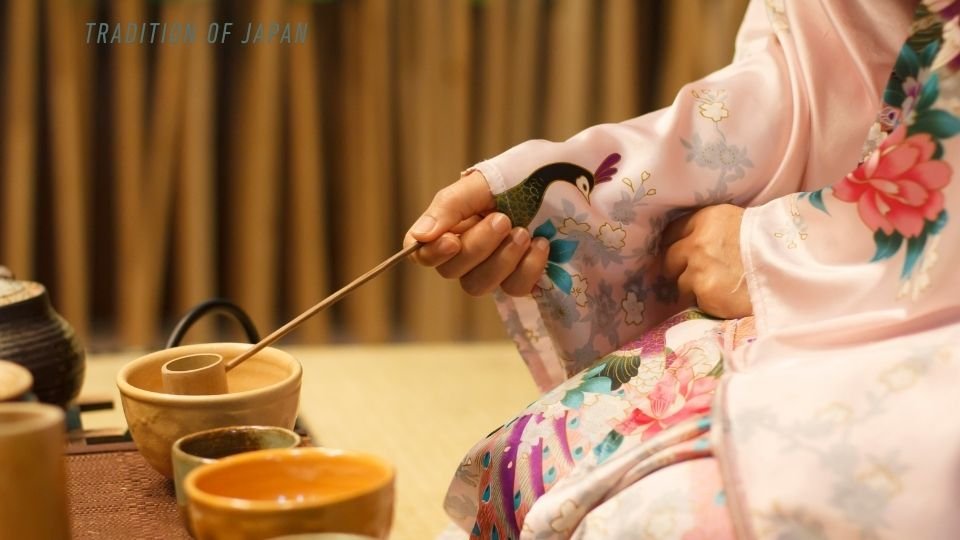The Rich Tapestry of Japanese Tea Ceremony Traditions

The Rich Tapestry of Japanese Tea Ceremony Traditions. Discover the beauty of Japanese tea ceremony traditions. Explore the history, meaning, and timeless art of chanoyu, and learn how this cultural ritual continues to inspire the world today. The Japanese tea ceremony, known as chanoyu, chado, or sado, is one of Japan’s most treasured traditions. More than simply preparing and drinking tea, it’s a deeply spiritual and artistic experience that has evolved over centuries. Rich with meaning, the tea ceremony reflects Japan’s love for nature, simplicity, and mindfulness.
In this article, we’ll take a closer look at the origins, philosophy, tools, and modern relevance of the tea ceremony, revealing why it remains a beloved cultural practice in Japan and beyond.
Origins of the Japanese Tea Ceremony
one of the Rich Tapestry of Japanese is tea ceremony. Tea ceremony traditions trace back to the 9th century when Buddhist monks brought powdered green tea, or matcha, from China to Japan. Initially used in religious practices, tea helped monks stay awake during long meditation sessions. Over time, tea drinking evolved beyond temples, influenced heavily by Zen Buddhist philosophy, which emphasized simplicity, humility, and living fully in the present moment.
By the 15th century, tea gatherings became popular among Japan’s elite, thanks to pioneers like Murata Jukō, who introduced a more spiritual and minimalist approach to tea culture.
Sen no Rikyū and the Heart of the Tradition
The most influential figure in the history of the tea ceremony in Japanese is Sen no Rikyū. Living in the 16th century, Rikyū transformed tea gatherings into a profound art form rooted in wabi-sabi—the appreciation of imperfection and transience.
He defined the four essential principles of tea practice:
- Wa (harmony)
- Kei (respect)
- Sei (purity)
- Jaku (tranquility)
Rikyū’s vision was to create a space where host and guests could share a humble yet deeply meaningful moment, away from the chaos of everyday life. His ideals continue to shape the spirit of the Japanese tea ceremony today, add the Rich Tapestry of Japanese Traditions.
Key Elements of the Japanese Tea Ceremony
The Chashitsu: The Tea Room
A traditional tea ceremony is held in a chashitsu, a tea room designed with natural materials like wood and paper. Guests enter through a small, low door (nijiriguchi), symbolizing humility. Inside, the room is minimalistic, encouraging focus on the experience itself rather than material distractions.
Essential Tea Tools (Chadōgu)
The tools of the tea ceremony, called chadōgu, are central to the ritual. Each item is chosen carefully and holds symbolic meaning. Key items include:
- Chawan (tea bowl)
- Chasen (bamboo whisk)
- Chashaku (tea scoop)
- Natsume (tea caddy)
Even the way these utensils are cleaned and handled reflects respect, attention to detail, and mindfulness.
The Ritual: Preparing and Serving Matcha
The host prepares matcha with slow, deliberate movements, emphasizing grace and intention. Every step, from cleaning the bowl to whisking the tea, is performed with deep concentration. Guests observe quietly, appreciating not only the tea but the atmosphere of peace and mutual respect.
Seasonal Beauty and Aesthetics
The Japanese tea ceremony is intimately tied to the seasons. Everything from the flowers in the tokonoma (alcove) to the type of tea bowl used is chosen based on the time of year.
- In winter, heavier bowls and warmer settings are chosen for comfort.
- In summer, lighter fabrics and fresh flowers are used to create a cooling atmosphere.
This seasonal sensitivity highlights the Japanese value of living in harmony with nature’s rhythms, a key element in many traditional practices, including the tea ceremony.
Major Schools of Tea Ceremony
Today, there are several prominent schools of tea ceremony, each with its own style and philosophy:
- Urasenke: The most widespread school, known for accessibility and global outreach.
- Omotesenke: Emphasizes simplicity and a more subdued aesthetic.
- Mushanokōji-senke: Focuses on rustic, traditional values.
Although their approaches differ slightly, all schools stay rooted in the core principles Sen no Rikyū outlined centuries ago.
The Spirit of Omotenashi (Japanese Hospitality)
A crucial aspect of the tea ceremony is omotenashi, Japan’s philosophy of hospitality. The host’s goal is to anticipate the guests’ needs without drawing attention to their efforts. Every choice—the utensils, the sweets, the pace of the gathering—is made to ensure the guests feel valued and cared for.
This spirit of heartfelt hospitality turns a simple cup of tea into a deeply personal, almost sacred experience.
Modern-Day Tea Ceremonies: Preserving and Evolving Traditions
While fewer people in Japan today study the full formal tea ceremony, its influence remains everywhere. From modern architecture and garden design to culinary arts and daily rituals, the spirit of chanoyu lives on.
Tea schools, workshops, and cultural events continue to introduce new generations to the beauty of the tea ceremony. International interest in Japanese culture has also helped spread the tradition worldwide, keeping it vibrant and evolving while staying true to its roots.
Conclusion
The Rich Tapestry of Japanese Tea Ceremony Traditions reveals a world where every detail matters, where hospitality is an art, and where fleeting moments are treasured.
By learning about and participating in a Japanese tea ceremony traditions, we step into a tradition that invites us to slow down, appreciate beauty in simplicity, and connect more deeply with the world around us.
Whether you are sipping matcha in a traditional chashitsu or simply enjoying tea at home, the spirit of wa, kei, sei, and jaku can enrich your everyday life—one bowl of tea at a time.


